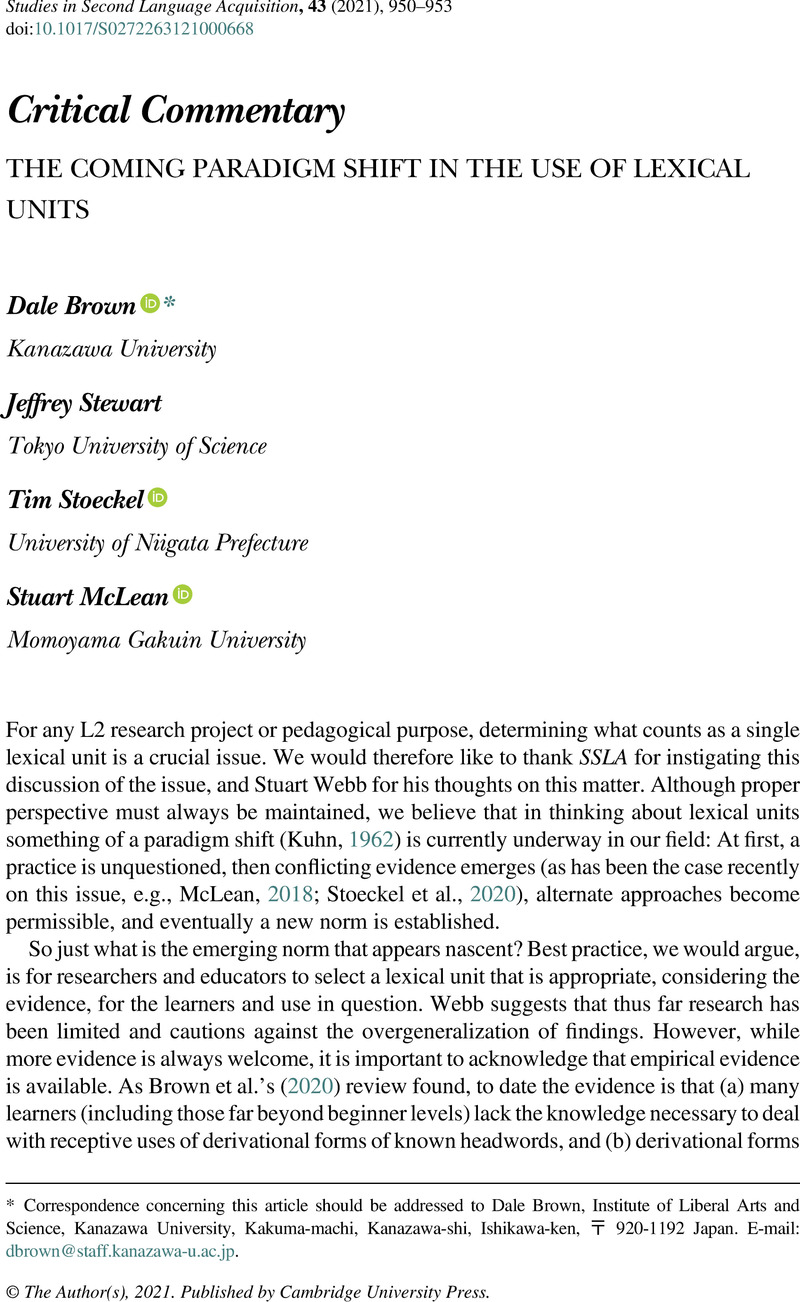Crossref Citations
This article has been cited by the following publications. This list is generated based on data provided by Crossref.
Webb, Stuart
2021.
WORD FAMILIES AND LEMMAS, NOT A REAL DILEMMA.
Studies in Second Language Acquisition,
Vol. 43,
Issue. 5,
p.
973.
Pinchbeck, Geoffrey G.
Brown, Dale
Mclean, Stuart
and
Kramer, Brandon
2022.
Validating word lists that represent learner knowledge in EFL contexts: The impact of the definition of word and the choice of source corpora.
System,
Vol. 106,
Issue. ,
p.
102771.
Ha, Hung Tan
Le, Linh Thi Thao
Ho, Nam Thi Phuong
and
Trang, Nguyen Huynh
2023.
Measuring native‐speaker vocabulary size. PaulNation and AverilCoxhead, John Benjamins Publishing Company, Amsterdam/Philadelphia, 2021, xiii, 160 pp., Hardbound: ISBN 9789027208149, EUR 95.00; Paperback: ISBN 9789027208132, EUR 33.00; e‐Book: ISBN 9789027260291, EUR 95.00.
International Journal of Applied Linguistics,
Vol. 33,
Issue. 1,
p.
88.
Vilkaitė-Lozdienė, Laura
and
Vilkienė, Loreta
2023.
Vocabulary size estimates for Lithuanian native speakers.
ITL - International Journal of Applied Linguistics,
Vol. 174,
Issue. 2,
p.
177.
De Wilde, Vanessa
2023.
The auditory picture vocabulary test for English L2: A spoken receptive meaning-recognition test intended for Dutch-speaking L2 learners of English.
Language Teaching Research,
Green, Clarence
Pantelich, Melania
Barrow, Michael
Weerasinghe, Daya
and
Daniel, Rachel
2024.
Receptive vocabulary size estimates for general and academic vocabulary at a multi-campus Australian
university.
Australian Review of Applied Linguistics,
Vol. 47,
Issue. 2,
p.
153.
Yu, Hong
and
Wen, Ju
2025.
Examining lexical profile in general-audience English podcasts: A close replication of Nurmukhamedov and Sharakhimov (2021).
Language Teaching,
Vol. 58,
Issue. 4,
p.
556.
Min, Changyong
and
Sukying, Apisak
2025.
Measuring derivational knowledge of Chinese EFL learners: the effect of explicit instruction.
Language Awareness,
p.
1.



